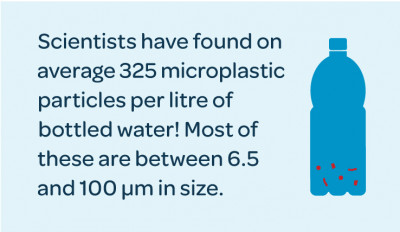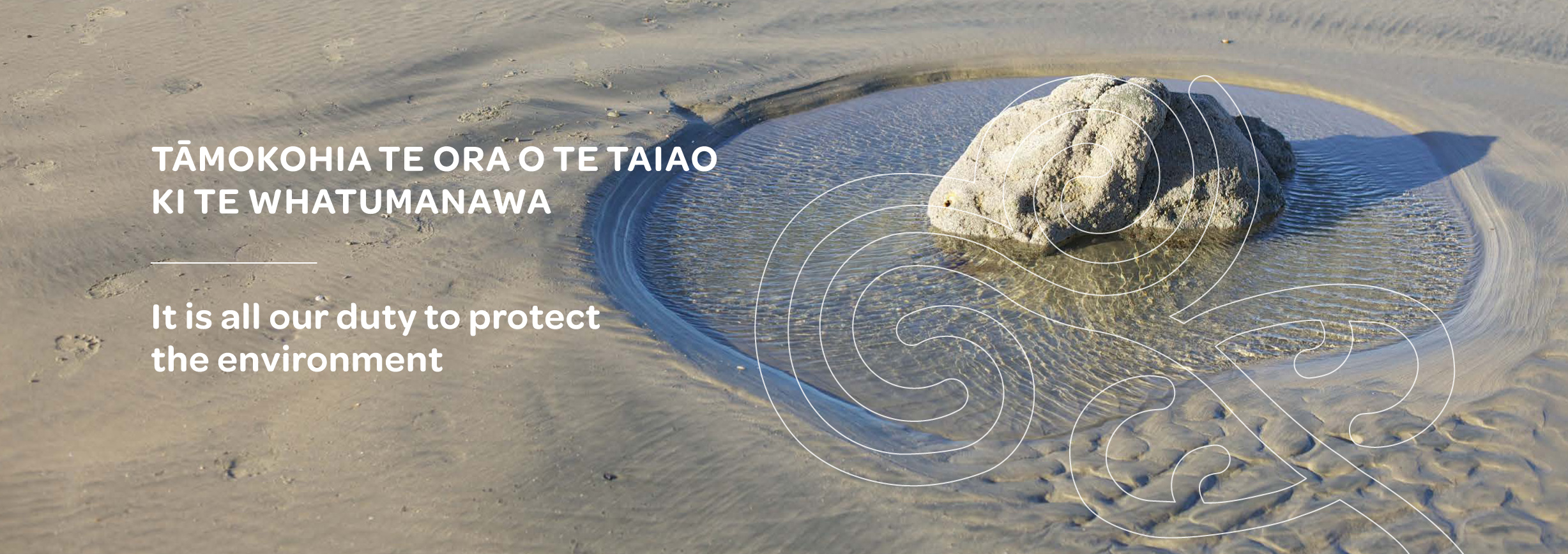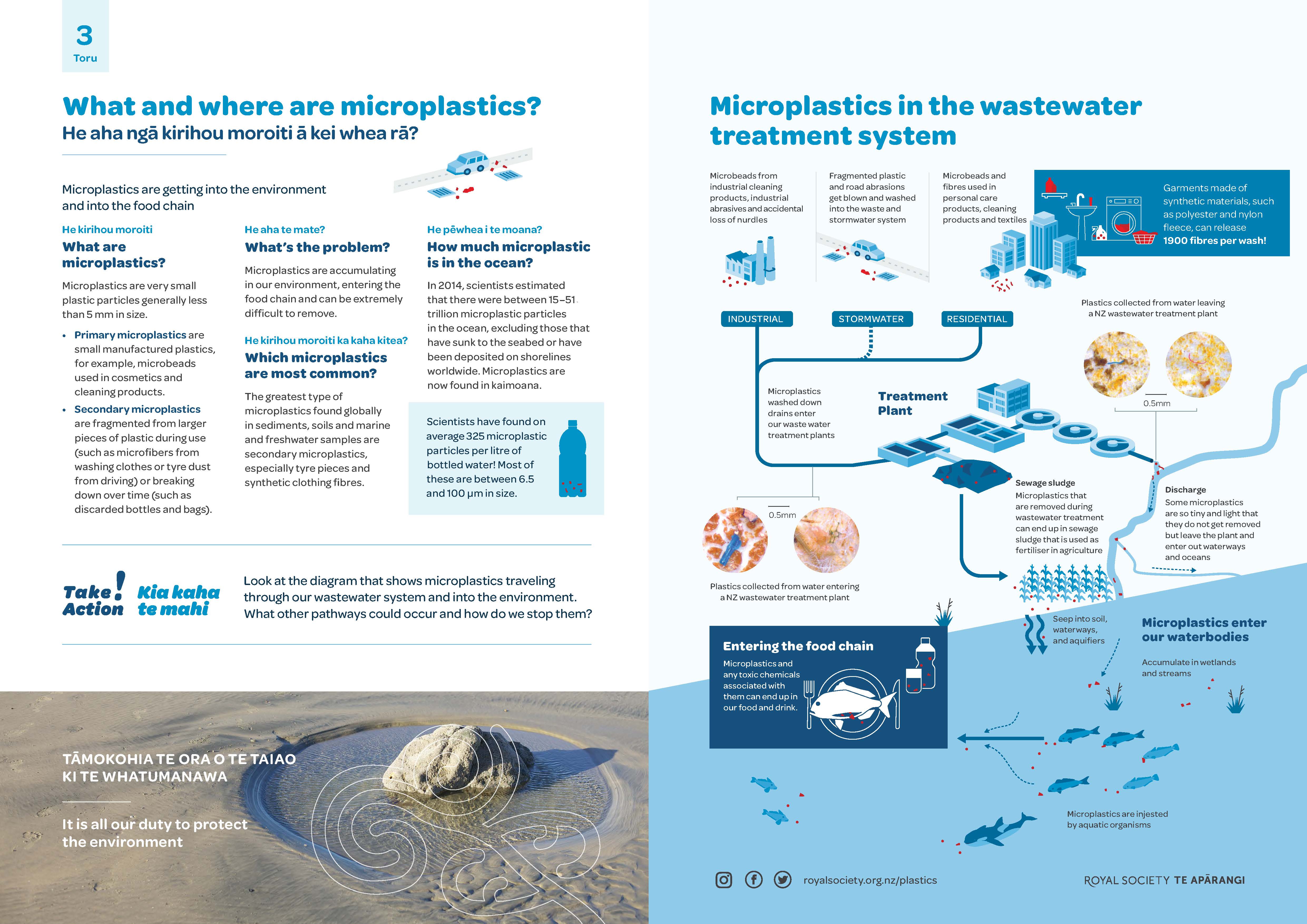3 Toru What and where are microplastics
He aha ngā kirihou moroiti ā kei whea rā?
Mircroplastics are getting into the environment and into the food chain. Look at the diagram that shows microplastics travelling through our wastewater system and into the environment. What other pathways could occur and how do we stop them?
Download 3 Toru What and where are microplastics (A3 poster)
or A4 double-sided
He kirihou moroiti What are microplastics?
Microplastics are very small plastic particles generally less than 5 mm in size.
- Primary microplastics are small manufactured plastics, for example, microbeads used in cosmetics and cleaning products.
- Secondary microplastics are fragmented from larger pieces of plastic during use (such as microfibers from washing clothes or tyre dust from driving) or breaking down over time (such as discarded bottles and bags).
He aha te mate? – What’s the problem?
Microplastics are accumulating in our environment, entering the food chain and can be extremely difficult to remove.

He kirihou motoiti ka kaha kitea? - Which microplastics are most common?
The greatest type of microplastics found globally in sediments, soils and marine and freshwater samples are secondary microplastics, especially tyre pieces and synthetic clothing fibres.
He pēwhea te rahi o ngā kirihou moroiti ki roto i te moana? How much microplastic is in the ocean?
In 2014, scientists estimated that there were between 15–51 trillion microplastic particles in the ocean, excluding those that have sunk to the seabed or have been deposited on shorelines worldwide. Microplastics are now found in kaimoana.


